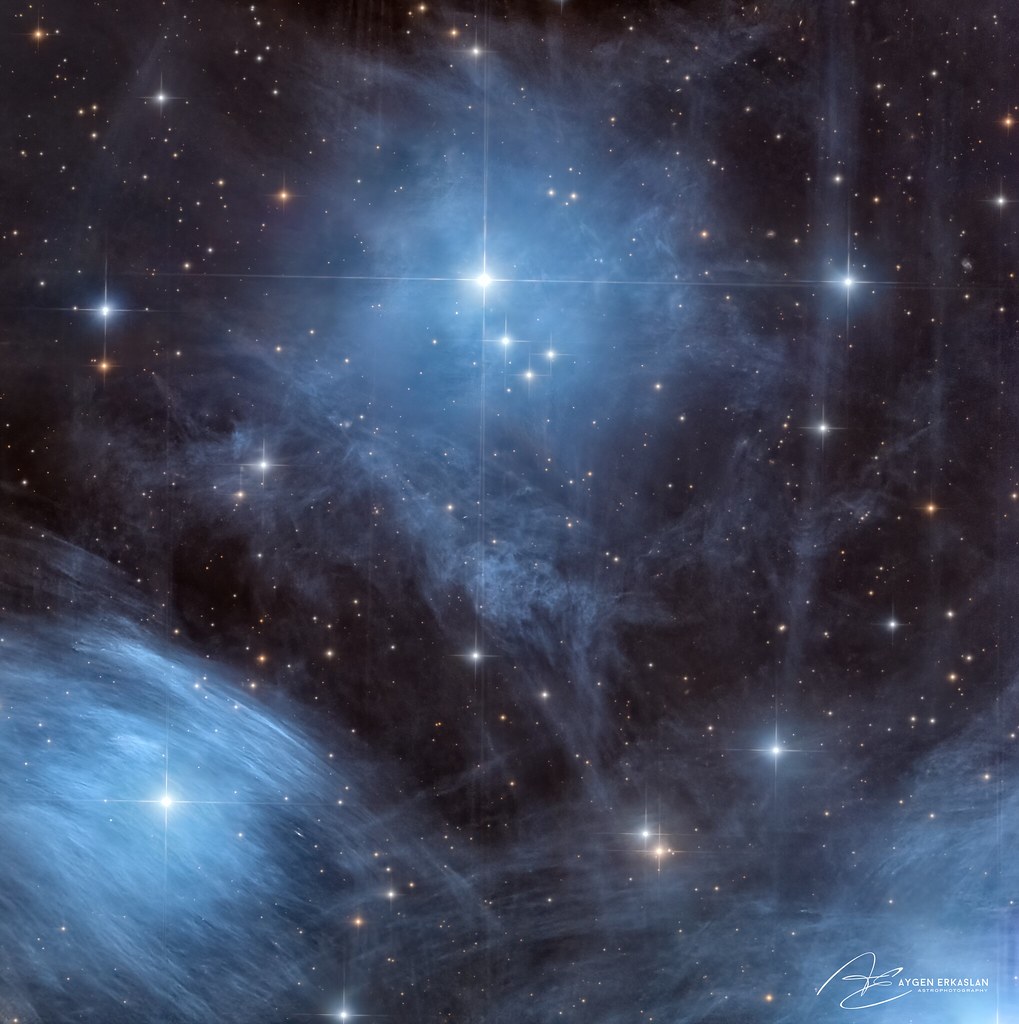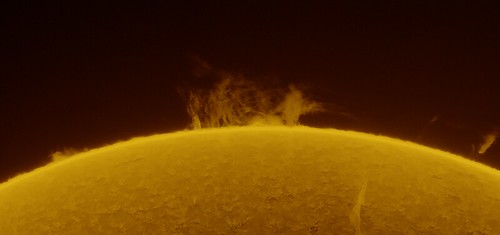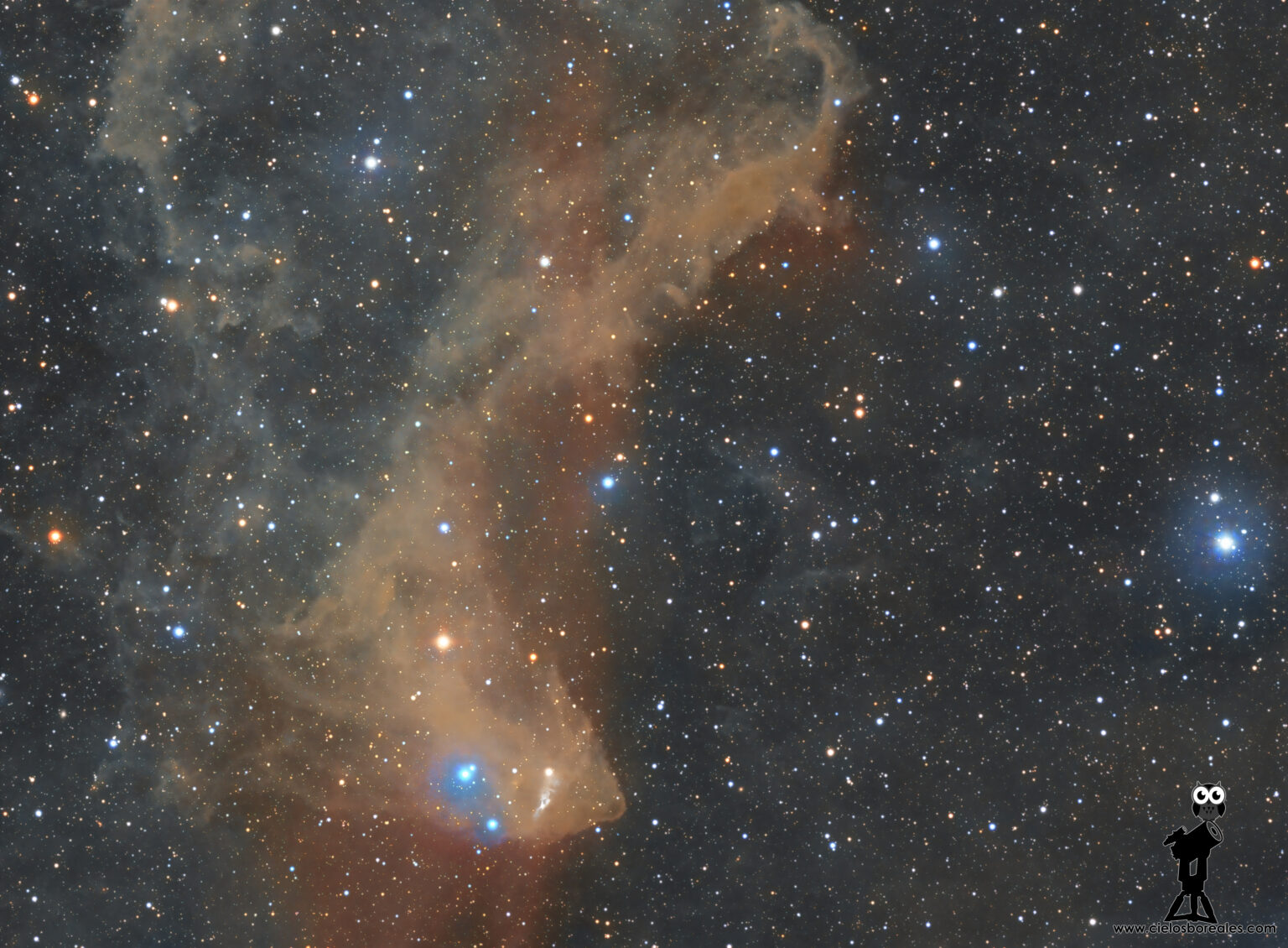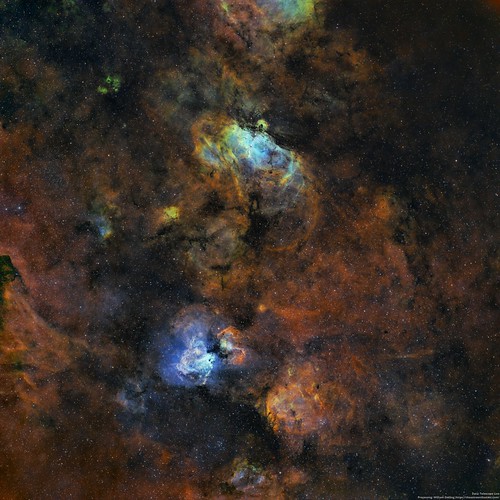 Flaming Star Nebula
Flaming Star Nebula by
Andreas Dobbeler, auf Flickr
I wanted to image this nebula since I have seen this picture on astrobin <a href="
https://www.astrobin.com/5l8pbx/" rel="noreferrer nofollow">
www.astrobin.com/5l8pbx/</a>
It looks absolute striking and way better than my own attempt. Guess mono and over double the exposure time doing their magic here.
If possible I will try to get a few more ours on this target, weather was an absolute catastrophe since early December for me, with only a few nights of clear skies.
Esprit 120
Eq6r Pro
DSPro 2600c
Mini Guide Scope
Captured using Nina
76*800sec exposures at gain and offset 100
my processing was the following:
- stacked and normalized in app
- graxpert for gradient romoval
- pixinsight for spcc and everything else
- some final adjustments in affinity photo
Thanks to chatGPT for the following lines

The Flaming Star Nebula, also known as IC 405 or Caldwell 31, is a diffuse emission nebula located in the constellation Auriga. It is about 1,500 light-years away from Earth and covers an area of about five times the size of the full Moon in the night sky.The Flaming Star Nebula gets its name from the distinctive shape of the reddish-pink nebula, which resembles a fiery, flaming star. The nebula is primarily composed of hydrogen gas, which is ionized by the ultraviolet radiation from a nearby hot, young star called AE Aurigae. This process causes the gas to emit light, creating the glowing appearance of the nebula.In addition to the hydrogen gas, the Flaming Star Nebula also contains dust particles, which absorb and scatter light. This gives the nebula its intricate, filamentary structure and contributes to the overall reddish-pink color.The Flaming Star Nebula is a popular target for amateur astronomers and astrophotographers due to its striking appearance and relative brightness. It is best viewed from dark-sky locations using telescopes or large binoculars, and is particularly impressive when captured in long-exposure photographs.
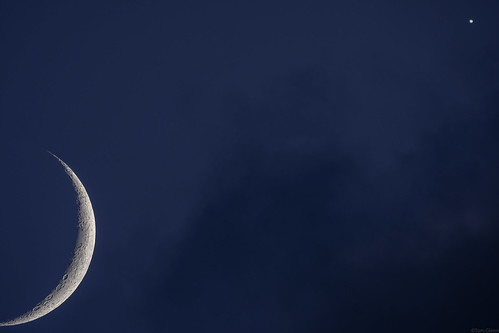 Moon and Jupiter by Tom Glenn, on Flickr
Moon and Jupiter by Tom Glenn, on Flickr





